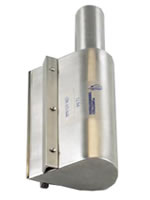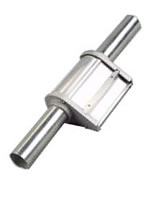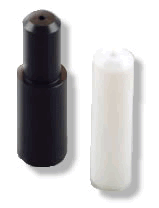Having worked with other air knives, when it came time to build our own,we started by designing the air knife shape for better airflow, which in turn makes our air knife systems more effective at delivering air and more energy efficient. We tried a number of designs to achieve the best laminar flow. Laminar flow refers to homogeneous curtain of air with limited ‘spread’. Better laminar airflow results in a better air squeegee or air broom. (Broom or squeegee is a better description but doesn’t sound as intriguing as “air knife”. We didn’t coin the phrase “air knife” we just use it like everyone else.)
To be effective, the operating characteristics of the air knife and the performance requirements for your application need to be matched. To read about performance levels and system sizing of air knives click here.
Because there are so many varieties of applications requiring air blow-off it is impossible to identify them all. In broad general categories, there are three basic air blow-off patterns required; linear, circular and directed nozzle.
Three basic types of blow-off apparatus available:
1. Linear air knives
Produce a curtain of air – constructed from stainless steel or aluminum, designed to specific length and performance needs. Lengths can run from 3 inches to 60 inches.



Stainless Steel Teardrop Stainless Steel Diamond Aluminum Teardrop
Teardrop

2. Circular air knives
Provide a conical blast of air and are useful for certain types of extrusion shapes. Each circular air knife is constructed for its specific application. Made from from stainless steel, aluminum, or plastic. (Aluminum shown).

3. Air nozzles
Direct a blast of air at a particular spot. Air nozzles come in standard sizes, and special configurations can be made of UHMW plastic, aluminum, or stainless steel (UHMW plastic shown)